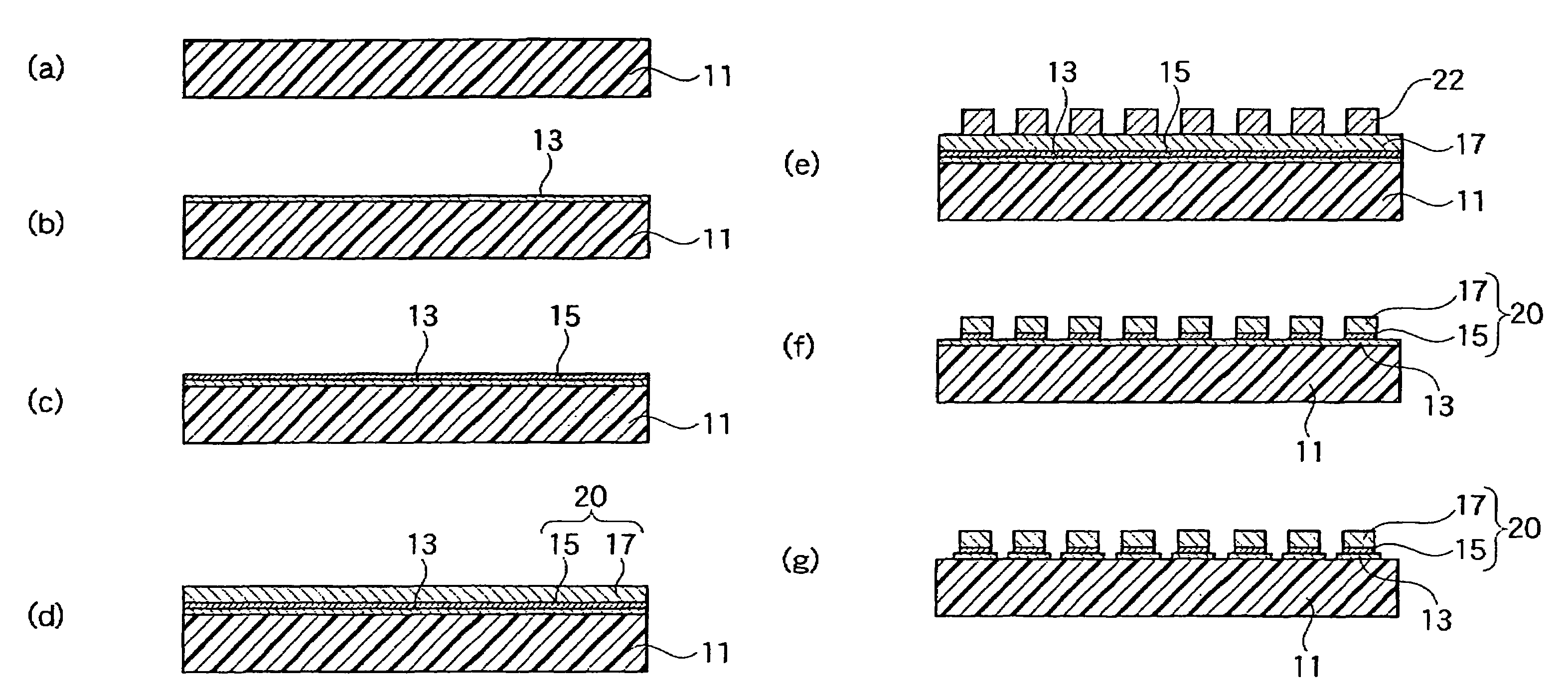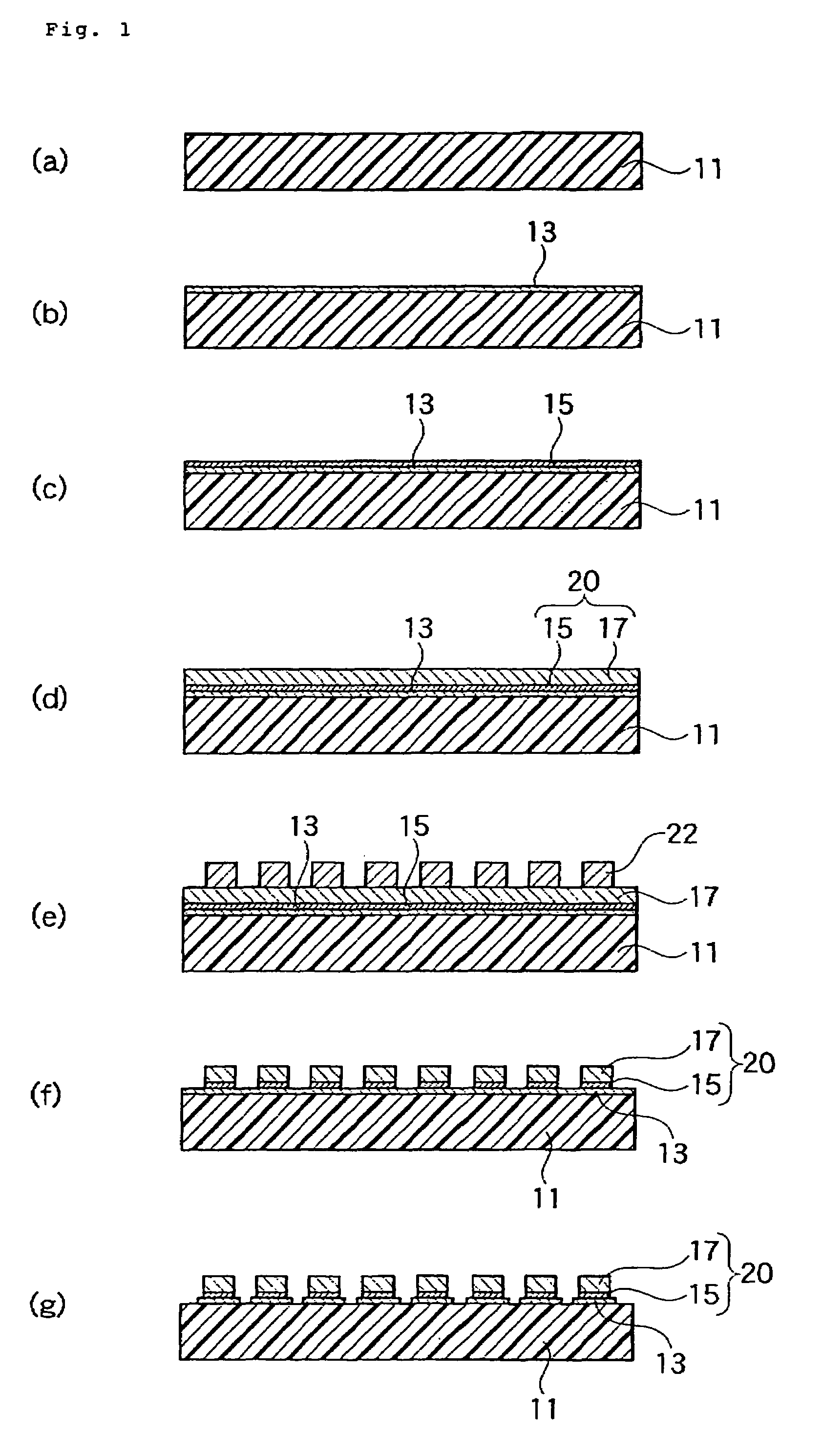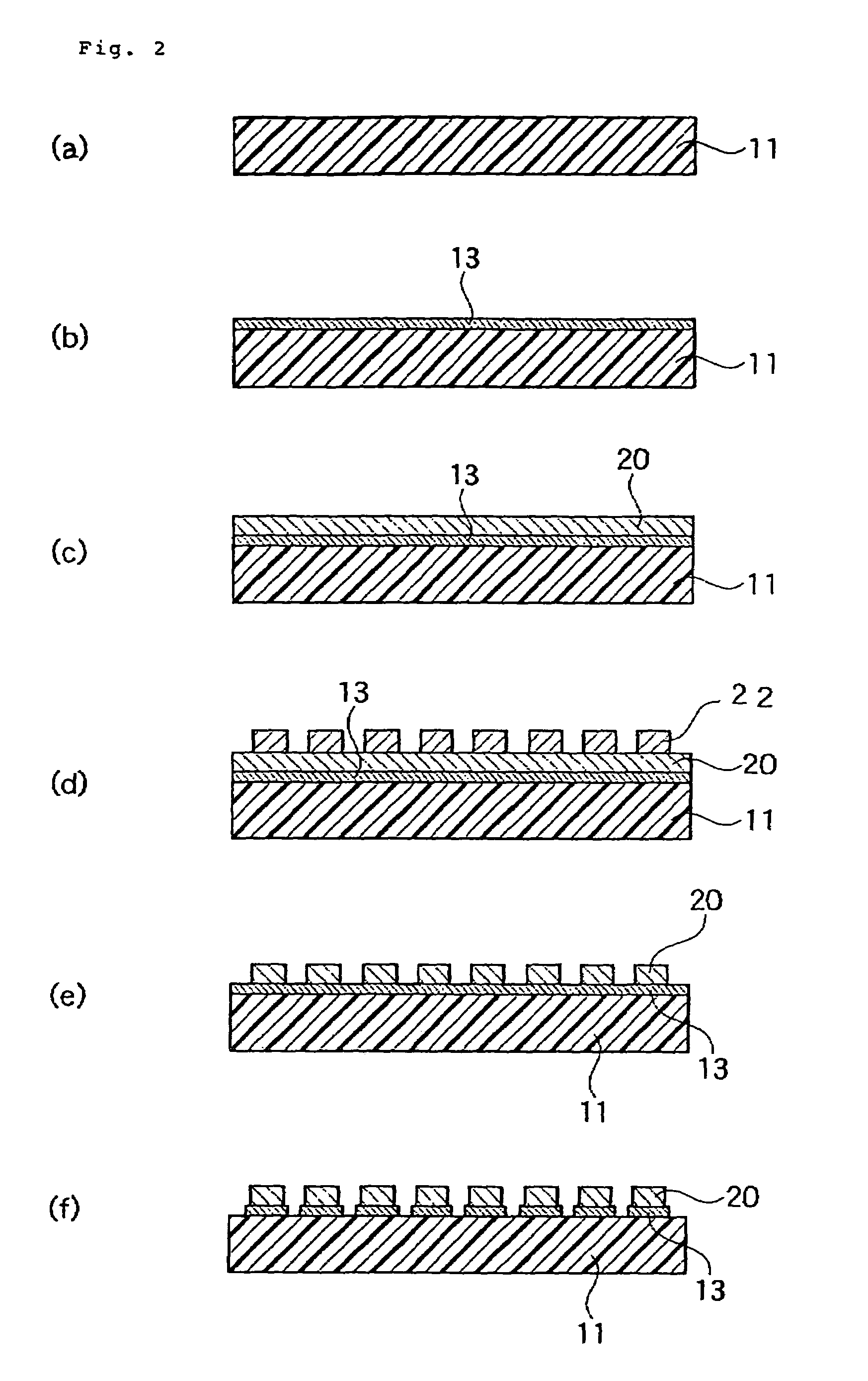Method for producing a printed circuit board
a printed circuit board and printed circuit technology, applied in the direction of resistive material coating, turning machines, metallic material coating processes, etc., can solve the problems of short circuit attributable to migration, impaired insulation between wiring patterns in a relatively short period of time, etc., and achieve high insulation resistance and high reliability
- Summary
- Abstract
- Description
- Claims
- Application Information
AI Technical Summary
Benefits of technology
Problems solved by technology
Method used
Image
Examples
example 1
[0064]One surface of a polyimide film having an average thickness of 75 μm (available from Ube Industries, Ltd., Upirex S) was subjected to roughening treatment by back sputtering, and then a nickel-chromium alloy was sputtered under the following conditions to form a chromium-nickel alloy layer having an average thickness of 40 nm as a base metal layer.
[0065]That is to say, the polyimide film of 75 μm thickness was treated at 100° C. and 3×10−5 Pa for 10 minutes to perform degassing, and then a chromium-nickel alloy was sputtered under the sputtering conditions of 100° C. and 0.5 Pa.
[0066]On the base metal layer formed as above, copper was further sputtered under the conditions of 100° C. and 0.5 Pa to form a sputtering copper layer having an average thickness of 300 nm.
[0067]On the surface of the sputtering copper layer formed as above, copper was deposited by electroplating to form an electrolytic copper layer (electroplating copper layer) having a thickness of 8 μm.
[0068]The sur...
example 2
[0073]One surface of a polyimide film having an average thickness of 75 μm (available from Ube Industries, Ltd., Upirex S) was subjected to roughening treatment by back sputtering, and then a nickel-chromium alloy was sputtered under the following conditions to form a chromium-nickel alloy layer having an average thickness of 40 nm as a base metal layer.
[0074]That is to say, the polyimide film of 75 μm thickness was treated at 100° C. and 3×10−5 Pa for 10 minutes to perform degassing, and then a chromium-nickel alloy was sputtered under the sputtering conditions of 100° C. and 0.5 Pa.
[0075]On the surface of the sputtering base metal layer formed as above, copper was deposited by electroplating to form an electrolytic copper layer (electroplating copper layer) having a thickness of 8 μm.
[0076]The surface of the copper layer (i.e., conductive metal layer) formed as above was coated with a photosensitive resin, and the photosensitive resin was exposed and developed to form a pattern of...
example 3
[0083]One surface of a polyimide film having an average thickness of 38 μm (available from Ube Industries, Ltd., Upirex S) was subjected to roughening treatment by back sputtering, and then a nickel-chromium alloy was sputtered in the same manner as in Example 1 to form a chromium-nickel alloy layer having an average thickness of 30 nm as a base metal layer.
[0084]On the base metal layer formed as above, copper was sputtered in the same manner as in Example 1 to form a sputtering copper layer having an average thickness of 200 nm.
[0085]On the surface of the sputtering copper layer formed as above, copper was deposited by electroplating to form an electrolytic copper layer (conductive metal layer) having a thickness of 8 μm.
[0086]The surface of the electrolytic copper layer thus formed was coated with a photosensitive resin, and the photosensitive resin was exposed and developed to form a pattern of a comb-shaped electrode in such a manner that the wiring pitch should become 30 μm. Us...
PUM
| Property | Measurement | Unit |
|---|---|---|
| thickness | aaaaa | aaaaa |
| width | aaaaa | aaaaa |
| thickness | aaaaa | aaaaa |
Abstract
Description
Claims
Application Information
 Login to View More
Login to View More - R&D
- Intellectual Property
- Life Sciences
- Materials
- Tech Scout
- Unparalleled Data Quality
- Higher Quality Content
- 60% Fewer Hallucinations
Browse by: Latest US Patents, China's latest patents, Technical Efficacy Thesaurus, Application Domain, Technology Topic, Popular Technical Reports.
© 2025 PatSnap. All rights reserved.Legal|Privacy policy|Modern Slavery Act Transparency Statement|Sitemap|About US| Contact US: help@patsnap.com



